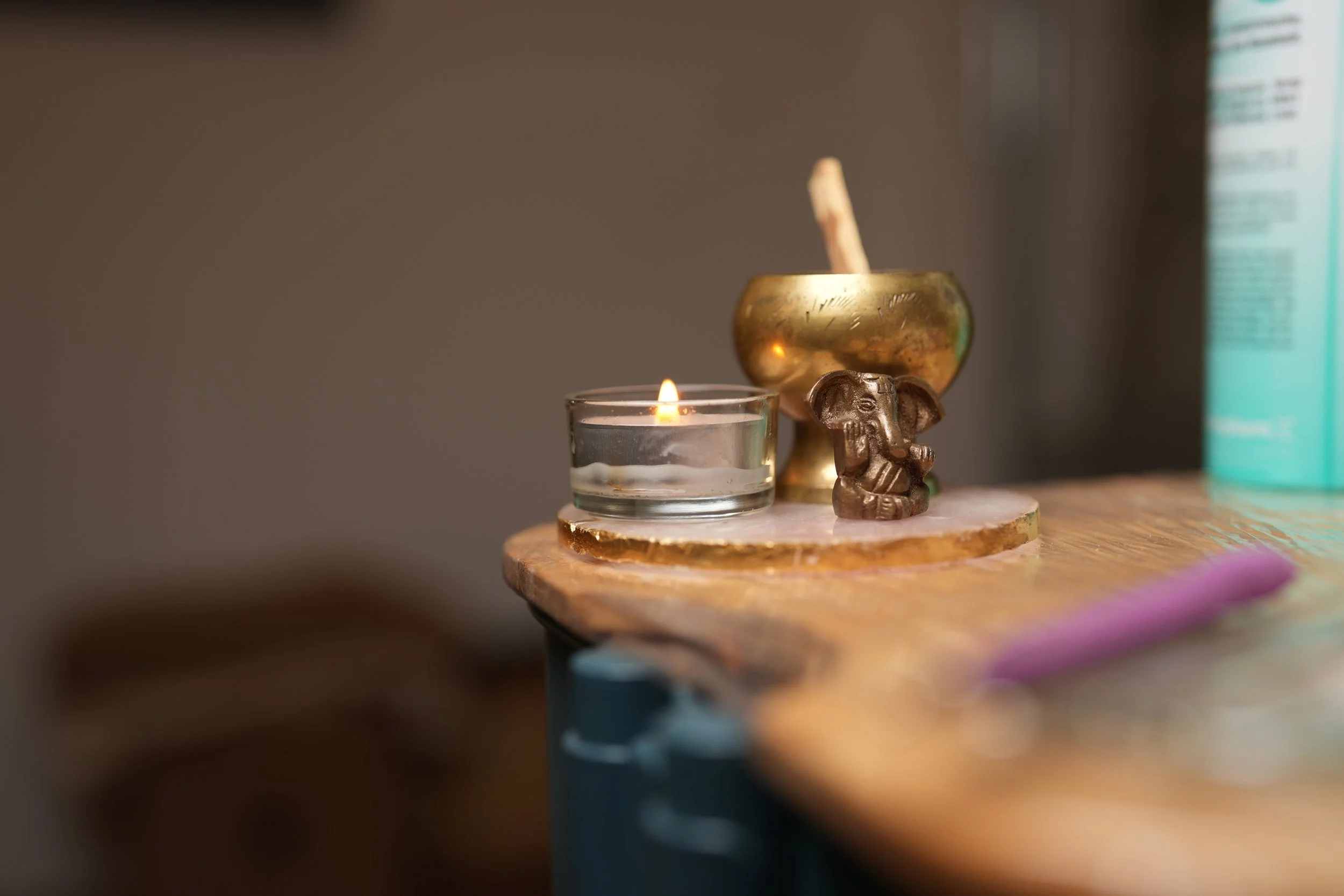Shamanic Tattooing
Tattooing that incorporates energetic components involves much more than just handpoking or a ritual setting.
It is about training the consciousness to develop a new way of dealing with pain. In traditional tattooing, we assume that the pain felt during the ritual is not created by the needle, but is released from the body's system. Consciously breathing into the pain plays a central role in this process.
It is not about glorifying pain, but about the fact that our system often does everything it can to escape pain - yet it is the greatest teacher in life if we find a healthy way of dealing with it.
Just as life shapes our character and our perspective on the world, i.e., the overall energy we embody on Earth, through sometimes severe blows of fate, we shape an image on our skin through the pain of tattooing.
It's about consciously and powerfully accepting difficult situations as a catalyst for achieving what we really want.
Tattoos are forever, if you really decide to get one. That means they come at a cost. That cost is commitment. On the one hand, I stand by my decision to wear this design for the rest of my life. On the other hand, I stand by what this tattoo symbolizes - before my community, before strangers, before my God(s).
It is precisely this commitment that is needed to create and maintain strong communities. Clear, open communication of one's own values. Standing by the decision to remain part of the community, even when things get really difficult.
This is one reason why many tribes have been performing tattooing and other pain rituals for thousands of years - they promote a sense of true commitment. Without this, much is missing, as we can clearly observe in today's Western world. Many here have not had the privilege of learning how to embody their own moral values.
Individual pain rituals also have the advantage of connecting individuals more deeply with themselves and their own truth. If you want true community, you need people who have strong inner morals and stand by them when it matters. True friends will confront you about your shadows, even if you are their shaman or tribal leader.
This requires guts, because entering into conflict always takes effort. Pain rituals strengthen these very qualities - guts and the courage to overcome one's own fear of conflict.
Another advantage of this ancient and modern form of tattooing is that a lot can be transformed energetically if you control the process with intention and clarity.
Somatically speaking, cells are opened from which energy can leave. It is not uncommon for the red flame of suppressed anger to strike me during a ritual. Good that Spirit holds the space for me so that what is ready to transform can do so.
Ötzi, for example, had tattoos on the parts of his body where he had physical ailments. The ink contained herbs that were tailored to the respective ailments.
Whether tattooing has a healing effect is something that cannot even be asked today for legal reasons.
Most tattooed people would probably confirm that it has a transformative effect.
So one might ask what healing really means.
If we take the Germanic root word hailijan as our starting point, healing comes from making whole. If we dig deeper, we reach the Indo-European root word kailo-, meaning whole, healthy.
If, as discussed, tattooing reinforces and strengthens inner and outer communal values, it is definitely a step towards individual and collective wholeness.

